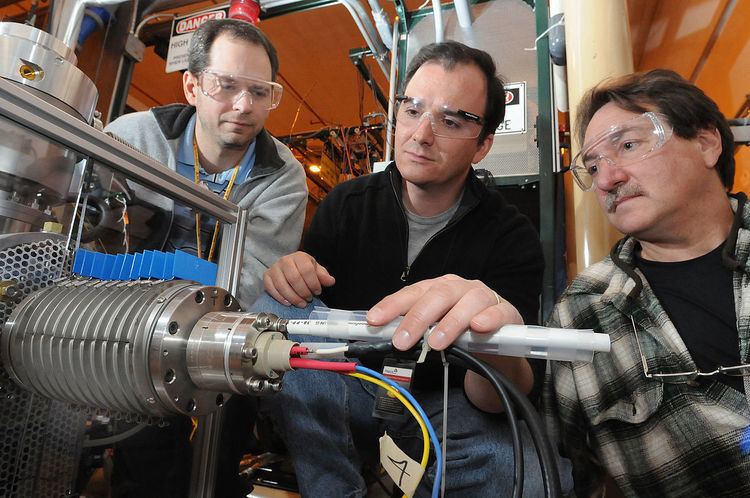 | ||
The Argonne Tandem Linac Accelerator System (ATLAS) is a scientific user facility at Argonne National Laboratory. ATLAS is the first superconducting linear accelerator for heavy ions at energies in the vicinity of the Coulomb barrier.
Contents
The ATLAS accelerator at Argonne should not be confused with the ATLAS experiment at the Large Hadron Collider at CERN.
How ATLAS works
Ions are generated from one of two sources: the 9-MV electrostatic tandem Van de Graaff accelerator or the Positive Ion Injector, a 12-MV low-velocity linac and electron cyclotron resonance (ECR) ion source. The ions are sent from one of these two into the 20-MV 'booster' linac, then to the 20-MV 'ATLAS' linac section.
The ATLAS linac section contains 62 resonators, each one of seven different type. Each type accelerates ions to a particular velocity. Each resonator is also tunable to allow for a wide range of velocities.
The ions in the ATLAS linac are aligned into a beam which exits the linac into one of three experimental areas. The experiment areas contain scattering chambers, spectrometers and spectrographs, beamlines, a gamma-ray facility, and particle detectors.
What ATLAS is for
The energy levels of the ions produces by ATLAS are ideal to study the properties of the nucleus. Specifically, understanding reactions between nuclei from very low energies (typically encountered in burning stars) to the very highest energies (encountered soon after the "Big Bang"). Nuclei with specific properties can be studied to understand fundamental interactions.
What is ATLAS made of
Niobium is the primary metal used to construct the tubes [1] in the individual in-line resonators. Niobium is used because it is relatively cheap, yet it is a superconductor at relatively high temperatures. The difficulties is in its malleability, which is quite poor making it difficult to construct the shapes needed for the resonators. The machinists working at ATLAS are some of the only people in the world able to work with niobium to the degree necessary for construction and repair of the ATLAS parts.
